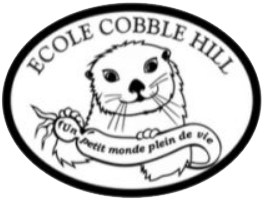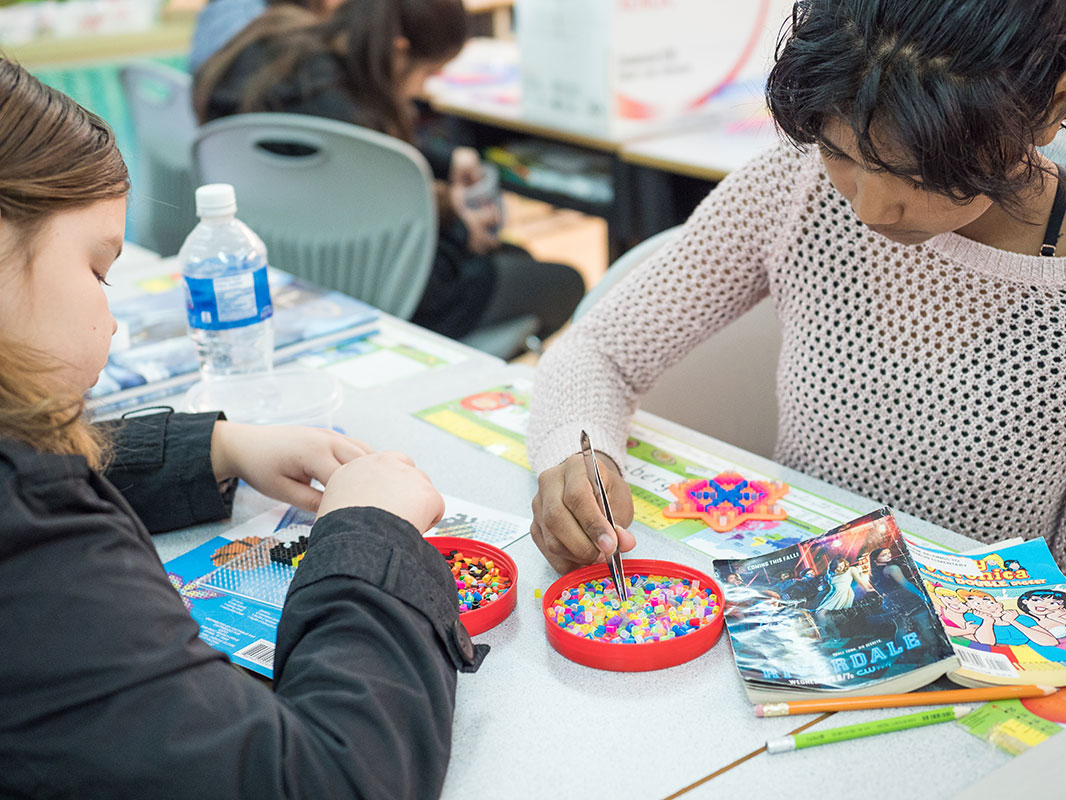Home Reading Tips
Reading Strategies and Tips for Success
Most French Immersion students come from families where French is not the language spoken at home. Parents often ask us how they can support their child with French reading when they themselves do not speak French.
Reading is a process that involves more than just pronouncing words and there are many things that you can do to assist your child with reading practice at home in French or English.
Always use the rule of five: if there are five or more words per book (primary level) or per page (novel or longer text at the intermediate level) that your child can’t read or does not understand, then the book is likely too challenging for them. If your child chooses a book that is too challenging they will get frustrated and start guessing words rather than using appropriate strategies such as rereading, chunking syllables or sounding words out. It is always better to practice with books at your child’s reading level, and rereading the same book over again several times is an excellent way to gain confidence in reading. You can ask your child’s teacher which level of books your child should be reading at home.
Choosing the Time and Place to Read
Choose a quiet time when your child is not over tired or hungry. Make sure there are no distractions such as younger siblings, loud music or the television. Sit beside your child and read with them. If the book is French, listen to them read to you. After the first reading of the book together, encourage your child to practice the book by rereading it to you, by themselves or to another family member. Regular practice is important and it is better to read one book every day than five books only once a week.
A FINAL NOTE ON READING WITH YOUR CHILD
Remember that it is important not ask the child to translate the story word for word. This would be challenging even for adults since some words and sentences, even ideas, don’t always translate easily from one language to another. Instead, use the questions above to talk to your child about their reading.
If you or your child absolutely can’t figure out a word then skip it and read on. You don’t have to understand each and every word to understand or appreciate a good book. If your child asks their teacher for help the next day, this will provide a valuable opportunity for the teacher to assess where support is needed.
French Sounds
(Fench Today: French Sounds for Parents – French sounds for beginners.)
Even the most involved parent has at times felt helpless trying to understand a homework assignment or trying to help a child figure out the pronunciation of a word as they support their child with school work at home. Therefore, we thought we’d give you a list of some differences and similarities between the French and English pronunciation of words.
- consonants are essentially the same;
- there are significant differences between the sounds of the vowels;
- i is pronounced like the long English e (see);
- ou in French always sounds like troop (not out);
- oi sound like wa in wash;
- au and eau have the long o sound (go);
- ez has the long a sound (say);
- accents change the sounds of vowels;
- è sounds like the short English e (peck);
- ç sounds like the English s (sand);
- é sounds like the long a sound (say);
- ê sounds like the short English e (peck);
- h is always silent in French;
- an s at the end of a word, to indicate the plural, is silent;
- qu sounds like k (not kw as quiet);
- th is pronounced t;
- ch is pronounced like the English sh;
- when a word begins with a vowel (or a silent h), it is usually joined with the last consonant of the preceding word – it will sound as though your child is reading one word instead of two.
Remember, the best ways to support your child as they move through the French Immersion program include speaking positively about the program to them, communicating regularly with their teacher, staying current with school events by reading newsletters, checking your child’s agenda daily, and providing stimulating activities at home in English which complement what they are learning in French.

Before Reading
Accessing Prior Knowledge and Predicting
- Look at the cover and read the title.
- Do you know anything about the subject of the story or book?
- Does it remind you of anything?
- Open the book and look at the pictures.
- Is it a story book? a non-fiction book? a comic strip? etc.
- Look at the parts of the book i.e. labels, index, table of contents, etc.
- Predict what the story or book will be about based on the pictures.
Decoding Hard Words
- Look at the pictures, the whole word, chunk the word and/or look at the letters.
- Does it sound right?
- Skip the word and go to the end of the sentence to try and make sense of the word.
- Go back to the beginning of the sentence and start again to check if your choice makes sense.
Figuring Out the Meaning of the Story or Book
- Look at the punctuation. How does it give us clues about the story or book?
- Read headings, labels, captions and speech bubbles and predict what will happen next or how the story will end.
- Find important facts or look for the problem in the story as your read.
During Reading
Code Breaking and Meaning Making
- Track the print with your fingers.
- Look for patterns.
After Reading
Evaluating and Summarizing
After you finish a story or a book, ask your child questions that will extend their thinking and understanding. Here is a list of sample questions that you can work with:
- What was the most important part or idea in the book?
- What new facts did you learn?
- Did you like the ending?
- If you had written the book would you change the ending?
- Does this book remind you of another story you have read?
- Does this story remind you of something that happened in your life?
- Retell the story to me in your own words.



